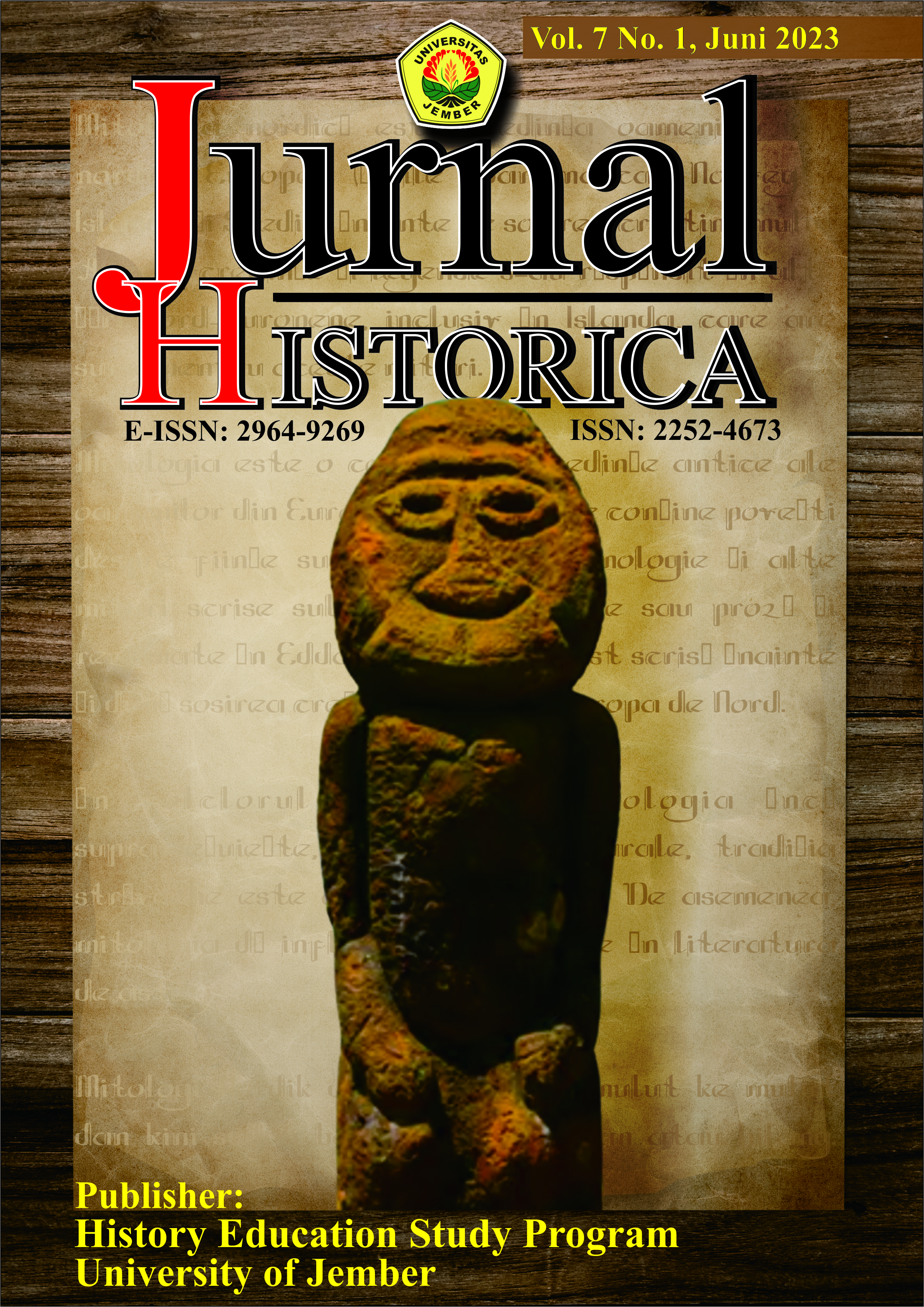Ludruk Arts-Based Historical Learning Innovation as An Improvement of Character Education and Student Learning Resources
DOI:
https://doi.org/10.19184/jh.v7i1.39361Keywords:
learning, regional culture, character education, ludrukAbstract
To address the complex global challenges of the 21st century, each individual must engage in meaningful learning. This type of research is qualitative with an analytical descriptive approach. This study aims to preserve regional culture that is almost eroded, sothat it is necessary to introduce it to students to revive it.The difference in the way each student learns makes educators rack theirbrains to find and create new learning models so that learning is easily absorbed by students and not boring. Learning material will certainly be interesting if educators are able to convey it creatively. This creativity requires expertise and ideas from educators by utilizing learning media. In the 21st century, history learning is no longer directed at building awareness andnationalism of students alone, but needs to be directed to aspects such as empathy, wisdom, pride in regional culture, the meaning ofnationalism that is not narrow, and patriotism. Ludruk art can improve the character education of students because it takes folklore, history, and everyday life, for example in the remo dance as an opening, ludruk tells about heroism. The results of thisstudy will later contribute to preserving regional culture through education as well as improving the character education of students.
Keywords: learning, regional culture, character education, ludruk
Downloads
References
Dede, C. (2010). “Comparing frameworks for 21st century skillsâ€, dalam J. Bellanca & R. Brandt (Eds.), 21st century skills: Rethinking how students learn. Bloomington, IN: Solution Tree Press.
Drake, F. D. & Nelson, L. R. (2005). Engagement in Teahing History: Theory and Practices for Middle and Secondary Teachhers. Upper Sadle River, New Jersey: Pearson Prentice-Hall.
Handoko, S. T., & Imawan, O. R. (2021). Pelatihan Inovasi Pembelajaran Sejarah Lokal Bagi Guru Sejarah Sma Kota Jayapura Di Masa Pandemi Covid-19. 2021, 1–10.
Hargianto, D., & Sariyatun, S. W. (2016). Perkembangan Seni Ludruk Kirun Dan Relevansinya Untuk Meningkatkan Apresiasi Siswa Terhadap Budaya Lokal. Candi, 13(2), 42–59.
Hasan, S. H. (2019) . Pendidikan Sejarah Untuk Kehidupan Abad Ke 21. HISTORIA: Jurnal Pendidik dan Peneliti Sejarah, 2(2), 61-72. DOI: https://doi.org/10.17509/historia.v2i2.16630 .https://doi.org/10.9744/interior.17.1.10- 17
Immaculata, Wardani, L. K., & Frans, S. M. (2019). Implementasi Konsep Eksistensi, Inovasi, Regenerasi pada Interior Pusat Komunitas Ludruk Irama Budaya Sinar Nusantara di Surabaya. Dimensi Interior, 17(1), 10–17.
Ismawati. (2017). Sejarah Kesenian Ludruk Karya Budaya Mojokerto Tahun 1969- 2009. Avatara, 5(3), 1027–1041.
Kusnoto, Y., & Minandar, F. (2017). Pembelajaran Sejarah Lokal: Pemahaman Kontens Bagi Mahasiswa. SOSIAL HORIZON: Jurnal Pendidikan Sosial, 4(1),125–137.
Nawafik, A. (2016). Dakwah Melalui Seni (Studi Kasus Kesenian Tradisional Ludruk Pada Masyarakat Giligenting Kabupaten Sumenep). 61–104.
Nusantara, W, at all. (2022) Pendampingan Ektrakurikuler Ludruk Sebagai Kegiatan Pendidikan Non Formal Dalam Pembinaan Siswa Di Sdn Ketapang Kuning Jombang. Empowerment: Jurnal Pengabdian Masyarakat, Vol. 05, No.03. DOI: https://doi.org/10.25134/empowerment.v5i03.5233
Purwanto, B. & Adam, A.W. (2005). Menggugat Historiografi Indonesia. Yogyakarta: Ombak.
Rulianto, R. (2019). Pendidikan Sejarah Sebagai Penguat Pendidikan Karakter. Jurnal Ilmiah Ilmu Sosial, 4(2), 127–134. https://doi.org/10.23887/jiis.v4i2.16527
Singer, A. (Edt.). (2003). “Teaching Local History.†Social Science Docket, Vol. 3, No. 2.
Abdullah, T. (1996). Sejarah Lokal di Indonesia. Yogyakarta: Gadjah Mada University Press.
UU No. 20 Tahun 2003 Tentang Sistem Pendidikan Nasional
Wardani, K. H., Andayani, & Sulaksono, D. (2020). Tragedi Kebun Tebu: Pengaruh Perubahan Sosial Pada Pertunjukan Ludruk. 22(1).
Wineburg, S. (2001). Historical Thinking and Other Unnatural Acts: Charting the Future of Teaching the Past. Philadelphia: Temple University Press.
Zed, M. (2004). Metode peneletian kepustakaan. Jakarta: Yayasan Obor Indonesia.



